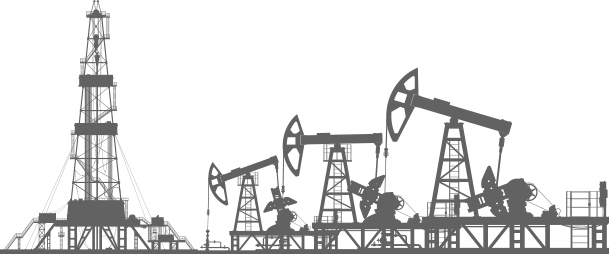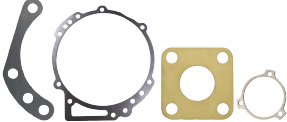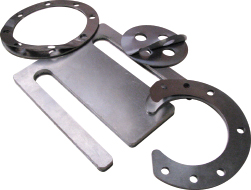The Advantages of Using Shims in the Oil & Gas Industry
 Shims is a generic name for a wide variety of components. Shim configurations range from simple OD/ID shapes (such as flat washers) to complex geometries. Shims are typically created by stamping with a punch press, cut via laser, EDM or water jet, or machined. The type of shim material, the configuration and quantity of parts required will generally determine the optimal manufacturing method.
Shims is a generic name for a wide variety of components. Shim configurations range from simple OD/ID shapes (such as flat washers) to complex geometries. Shims are typically created by stamping with a punch press, cut via laser, EDM or water jet, or machined. The type of shim material, the configuration and quantity of parts required will generally determine the optimal manufacturing method.
Precision Shims are used in a variety of applications typically seen in the Oil & Gas industry. Generators, motors, gearboxes and torque converters, turbines, compressors and pumps are just some of the components where Shims are commonly used. They can provide cost and labor reduction benefits throughout the life cycle of the equipment from assembly to installation to refurbishment and retrofitting.
Here are just a few ways shims can be used:
SPACE COMPENSATORS: Accumulated tolerances can cause axial motion in a shafted assembly (motors, generators, pumps, gearboxes, torque converters, etc.) which can dramatically reduce assembly life. Precision Shims can be used to absorb these tolerances.
THRUST WASHERS: Shims can act as thrust washers, an economical alternative to roller thrust bearings when applied forces are not extreme.
SHIMS FOR MATING SURFACES: Precision Shims can be installed between the mating surfaces of two components or assemblies. They offer several advantages over directly mating the assemblies: Lower manufacturing costs are realized as mating surfaces on castings or machined components can be manufactured to less precise tolerances, using the Precision Shim to compensate for the space created.
SACRIFICIAL SHIMS: When a Shim for mating surfaces is made of a slightly softer material than the mating assemblies, it can act as a sacrificial plate by absorbing the wear that would normally affect the mating surfaces due to normal friction, and wear and tear. This method also greatly reduces turnaround time and reduces costs during equipment rebuild or retrofit operations because the need for resurfacing of the mating components is greatly reduced or eliminated altogether.
LEVELING SHIMS: Leveling Shims (sometimes called pump shims or foot shims) are installed at the base of a mating component to assure perfect alignment of two assemblies. This is essential to prevent any angular misalignment between rotating components which could cause premature failure.

WHAT TYPE OF SHIMS ARE THERE, AND WHICH ARE BEST?
Shims can be made from solid or laminated material. Solid Shims are the best, low cost solution when the thickness of the Shim will be the same in every assembly.
Surface Bonded Laminated Shims are made from multiple layers of precision gauge metal foil, and then the surface of each layer is coated with a resin bonding material. Laminated Shims are the optimal solution when the required thickness will fall somewhere within a predictable range. Laminated Shims offer the advantage of fewer SKUs and less warehouse space than stocking a Shim in a multitude of different thicknesses.
A manufacturer would simply warehouse a Shim of the maximum required thickness, and then peel foil layers to suit the thickness requirement of each assembly. For example, if the required thickness of a Thrust Washer ALWAYS equals .062" (1.5mm), a Solid Shim could be the ideal solution. However, if the stacked tolerance fell into the range of .032" (0.8mm) to .100" (2.5mm), a Laminated Shim of .100" (2.5mm) thickness would meet the needs of any thickness within the required range. The operator would simply measure the gap to fill, and then peel the Laminated Shim to the appropriate thickness.
The drawback to Surface Bonded Shims is that the material that is peeled away from the Shim is no longer usable and must be discarded. Depending on the size, configuration and material of the Shim, varying degrees of proficiency may be required to peel the Shims.
 Edge Bonded Laminated Shims have all of the advantages of Surface Bonded Shims, without the drawbacks. Instead of being bonded at the surface of the foil, edge bonded shims are only bonded at selected locations on the edges of the Shim with a pliable cement product that is easier to peel. In addition to being easier to peel, the portion that is peeled may be reused! This is particularly beneficial in field service applications where the technician is not proficient with the peeling process.
Edge Bonded Laminated Shims have all of the advantages of Surface Bonded Shims, without the drawbacks. Instead of being bonded at the surface of the foil, edge bonded shims are only bonded at selected locations on the edges of the Shim with a pliable cement product that is easier to peel. In addition to being easier to peel, the portion that is peeled may be reused! This is particularly beneficial in field service applications where the technician is not proficient with the peeling process.
Conclusion
While Shims can be used to compensate for an unanticipated tolerance gap, companies can save a lot of money and inconvenience by incorporating Shims into the assembly during the design process. Shims can be tailor-made to reduce assembly costs, increase product lifespan, control refurbishment & retrofit costs, and reduce turnaround time and technical expertise requirements when making field repairs or modifications. Therefore, when designing a new assembly or coordinating a construction project, keep Shims in mind!
Click here to submit a Request for Quote
or call us today at 330.920.3655